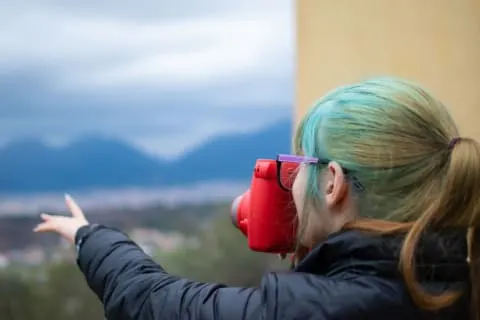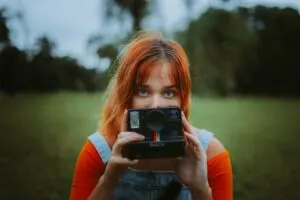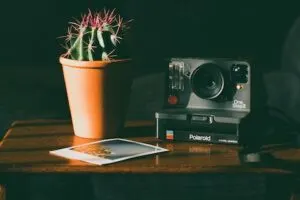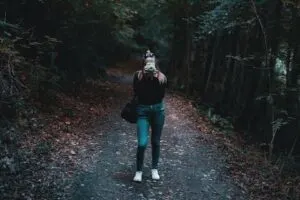Polaroid cameras are a step away from the others, especially when discussing today’s digital world. A Polaroid gives you what none of the others can, an instant photograph of the shot trying to be remembered.
That is awesome for most of you, but many wanted images captured at night. So, do Polaroid cameras work in the dark?

A Polaroid camera has many adjustments, even the older style ones. It can take good photos at night if set correctly, with the flash turned off or removed. The camera will need some light to create the image in the photo, but a flash will ruin the idea of a night photo.
A good quality Polaroid camera can easily take pictures in the dark. Obviously, if the surroundings are pitch black with no light coming in, there will be no way that an image can be taken. Some methods help improve the quality and clearness of a dark photo. Let’s take a look and find out.
How To Take Good Polaroid Pictures In The Dark?

To take good Polaroid pictures in the dark, follow these steps:
- Use a camera with a built-in flash or an external flash.
- Set the camera to night mode or a low-light setting.
- Choose a steady surface or a tripod to stabilize the camera.
- Adjust the exposure compensation if necessary to achieve a well-balanced image.
This will help ensure your photos are well-exposed and sharp, even in low-light conditions.
Taking a picture in the dark is much different than a daytime shot. If you want to enhance the image quality without taking from it that it was shot in the dark, you will need to adjust the Polaroid setting for the night within the camera.
Backgrounds Matter When Taking Night Photos
Taking a night photo means the camera will depend upon the light from your surroundings unless you have the flash on.

If the object you have in the sight of the camera is directly in front of a source of light, the picture will turn out with shadows and a glare that may make it impossible to see the main object.
- You must have a light behind you, shining toward the object.
- There must not be any direct sources of light behind the target.
- There should be a stationary background to prevent any blurs.
The camera’s light to pick up the object should be behind you.
When it is, the camera will use it to see the object and ensure that the picture is not black, which means that you will be able to have a shot that was obviously taken in the dark but can still be viewed without squinting to see what it is.
Distance Matters When Taking Dark Pictures
The Polaroid cameras are designed for closer pictures rather than distance. You can capture a good view of the full moon, but it is better to keep the targets closer.

It is hard for the Polaroid camera to pick up objects far away in the dark because the lighting will vary from the foreground, creating a shot with shadows, blurs, and bright spots.
- The target must be at least a foot away from you.
- The object in the viewfinder should be within 10 feet.
- The optimal distance for dark pictures with a Polaroid is 3 feet from the target.
- If taking a shot of something far away, such as the moon, the camera must set the shutter speed low, which means you must have a tripod or a steady hand.
The distance of the main objects in the picture will significantly affect how the dark photo turns out. Once again, if you want a good-quality photo that can be seen, ensure that there is plenty of light behind you and the object is within the perfect distance.
If you are trying to capture an object far away, such as the moon or stars, it will be necessary to play around with the settings on the Polaroid. The shutter speed, and aperture, need to be turned down.
Plus, you will only want this light to detract from the moon’s shine, so taking an excellent moon picture may be challenging in a city. However, if the area between the moon and you is dark, it should still be a good shot.
FAQs
Can You Take Polaroids in the Dark?

While taking Polaroids in low-light conditions is possible, the resulting images may be underexposed or too dark. To improve the quality of your Polaroid photos, use the built-in flash or an external light source to illuminate your subject.
Do You Leave Polaroids in the Dark?

Leaving your Polaroids in a dark place while they develop is recommended. Exposure to light during development can cause the image to fade or become discolored. Store your photos face-down or in a dark container to protect them during development.
Do Polaroids Work in the Dark?

Polaroid cameras can function in the dark, but the resulting images may be of poor quality due to low lighting.
To achieve better results, use a camera with a built-in flash or an additional light source to ensure proper exposure.
Can You Take Polaroid Pictures in the Dark?

Taking Polaroid pictures in the dark is possible, but the image quality may be compromised due to insufficient lighting.
To improve your photos, use a camera with a built-in flash or an external light source to provide enough light for a well-exposed image.
Leave a comment